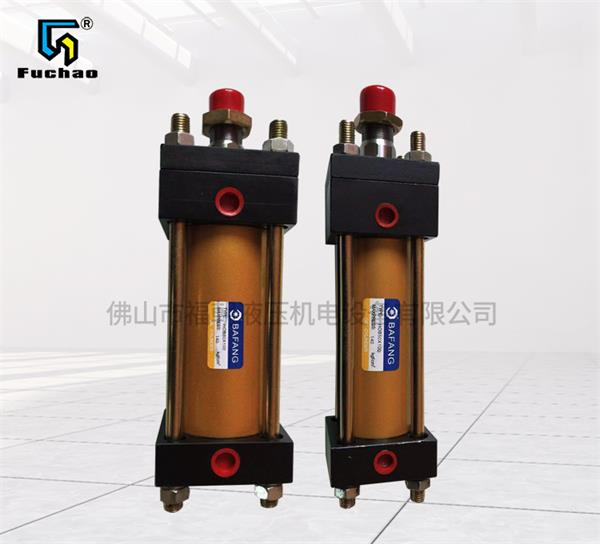I Hydraulic cylinder Key parameters of
1. Force
To push the load, the hydraulic cylinder needs Hydraulic system Give it a certain force, that is, force. The force of hydraulic cylinder is divided into thrust and tension.
The thrust refers to the oil pressure when the piston rod extends, and the tension refers to the oil pressure when the piston rod retracts.
2. Cylinder diameter
In the hydraulic system, we need to consider the effective area of the parts that contact the oil, that is, the piston area, that is, the size of the cylinder diameter.

3. Pressure
The hydraulic cylinder is the actuating element of the hydraulic system, and only when the hydraulic system provides a pressure source can the hydraulic cylinder move.
4. Relationship between stress, pressure and cylinder diameter
When the piston rod extends, the effective area of the hydraulic oil is the sectional area of the cylinder.
When the piston rod is retracted, the effective area of the hydraulic oil is: the sectional area of the cylinder - the sectional area of the piston rod. Generally, the thrust of the same hydraulic cylinder is greater than the tension.
Under the same pressure, the greater the cross-sectional area, the greater the force, that is, the larger the cylinder diameter, the greater the thrust; With the same cylinder diameter, the greater the pressure, the greater the force.
5. How to select pressure and cylinder diameter?
First of all, the thrust shall be determined according to the load, and the thrust of the hydraulic cylinder shall have a slight margin.
Model selection method: determine the data that the thrust is slightly greater than the load, and the corresponding ordinate and abscissa of the data are the cylinder diameter and pressure.
Generally, lower pressure shall be selected on the premise of meeting the requirements. For equipment with unlimited size, the pressure can be lower; The pressure of heavy equipment of walking machinery should be higher. In actual work, we can also select the design pressure according to the load and the host type. In general, in addition to the size of the load, the selection of the hydraulic cylinder also needs to consider the equipment type, the assembly space of the actuator, economic conditions and other factors.
2、 Tonnage selection of hydraulic cylinder
In general, the hydraulic cylinder shall be selected according to 90% of the force value; When the oil cylinder needs strict and continuous use, it is recommended to select the oil cylinder according to 70% - 80% of the rated force of the oil cylinder.
3、 Selection of cylinder stroke
If the installation space of the oil cylinder allows, please select the oil cylinder whose stroke is longer than the actual required stroke to improve the expandability of the system and prevent the excessive elongation of the oil cylinder.
4、 Selection of cylinder type
The basic types of oil cylinder can be divided into single acting oil cylinder and double acting oil cylinder.
Single acting self resetting cylinder: the piston is retracted by means of built-in reset spring, so it is not suitable to install special clamps and fixtures on the piston of this type of hydraulic cylinder, but this type of cylinder has simple dynamic energy configuration, flexible operation, and is especially suitable for pressing operations.
Double acting oil cylinder: it is suitable for installing special clamps and fixtures on the piston rod, or requiring quick recovery of the oil cylinder, or when the return journey requires traction.
Hollow hydraulic cylinder: it can be used for both pulling and pressing operations (with the same force value), with a wide range of applications.
5、 Precautions for installation and operation of oil cylinder
1. Ensure that the load is acting on the center of the oil cylinder and its direction is along the direction of the oil cylinder, otherwise it is prohibited to apply.
2. The cylinder can be used with eccentric load, but the load shall not exceed 5% of the total load, otherwise the service life of the cylinder will be shortened.
3. It is forbidden for the oil cylinder to disconnect the oil pipe interface of the oil pump under load.



